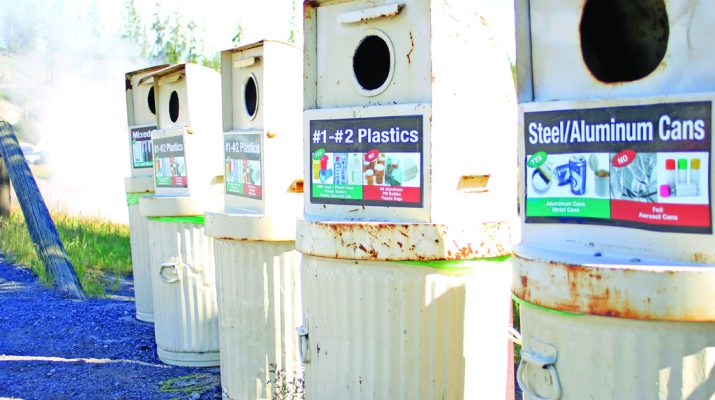My family set aside the first half of July for vacation this summer. We toured Wyoming over two weeks (as we had Colorado several years ago) instead of one big destination. Traveling counterclockwise around the state, starting in the Bighorns west of Buffalo, it was enlightening to see the contrast in availability of recycling and how residents and fellow tourists regarded the environment.
Though I had been to most of the destinations along our route before, a visitor still interprets a community with a broad brush. Just because there were no receptacles downtown or at businesses along the route through town did not mean there was a means to recycle anybody who lives there could have told me about. Towns of any size took pride in their appearance and picked up litter. One glaring exception was Snowy Range near Medicine Bow Peak. The full/locked refuse container at the packed trailhead was a sure sign to pack out trash yet hikers managed to mar the experience with bags of dog poop left along the trail.
Public recycling access was the best at Yellowstone National Park and Jackson. We spent a day at Yellowstone traveling the lower loop with Old Faithful and the surrounding geyser basin the main destination. From small to large, the park strategically placed bins everywhere at this top attraction.
The latest data on the NPS website cited information from 2018 diversion rates. “. . . visitors and operations in Yellowstone National Park generated 4,117 tons of waste from paper to batteries, to scrap steel.” the recycling and waste diversion section of the site states. Six years ago the park recycled 24 percent and composted 18 percent of waste with the rest heading to the landfill. Yellowstone is similar to Keep Alliance Beautiful in the range of materials it recycles. Recycled plastic becomes carpet backing. The park is working to improve its diversion of waste from landfills and had set a goal of 75 percent by 2020.
Yellowstone became a national park in 1872, preceding Wyoming statehood in 1890. The park has been working to promote energy conservation throughout its infrastructure from historic structures to new construction. I was surprised to read about the range of measures being implemented there that did not stand out on a day trip. The park has improved efficiency at its aging buildings to cut energy costs and increased the use of renewable energy, including solar panels microhydro generator. Water conservation, fleet and transportation, and environmental purchasing and waste reduction are other areas of focus.
Overall, Yellowstone was as clean and inviting as our previous visit about five years ago. People were still everywhere trying to enjoy the same attractions. During 2023, 4.5 million people visited the park – more than if everyone in Nebraska went twice. I am sure we can continue to value our nation’s natural treasures and the wide open spaces of places like Wyoming.

